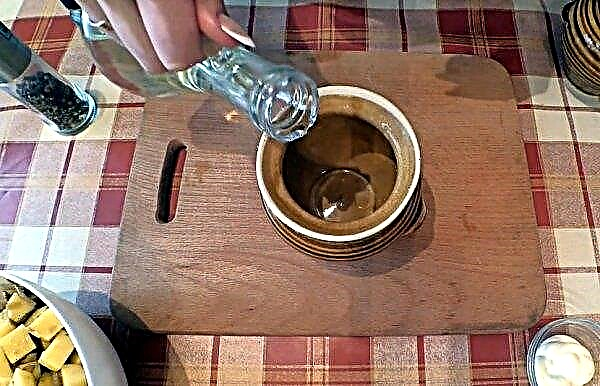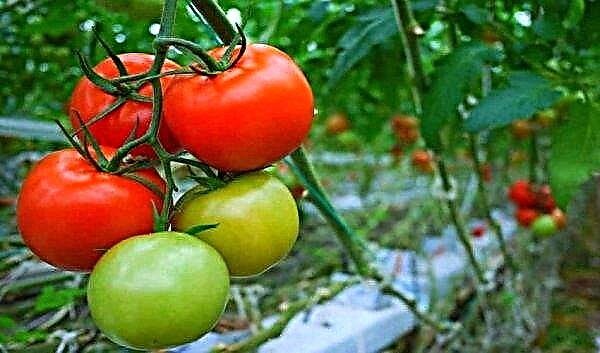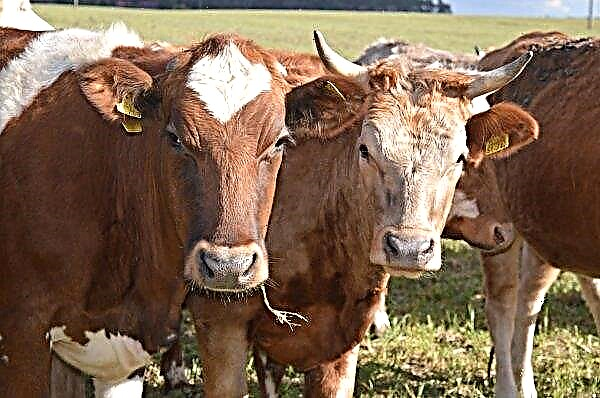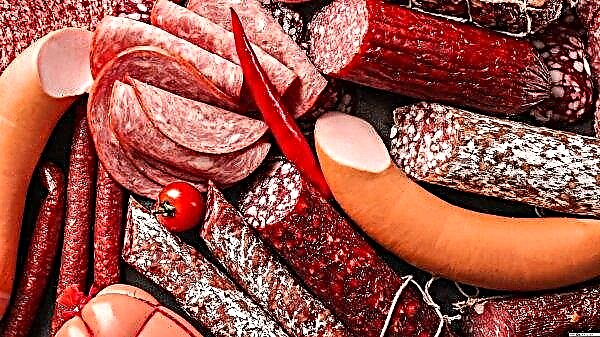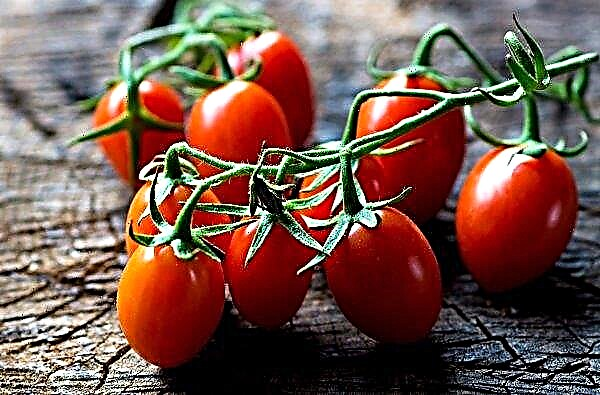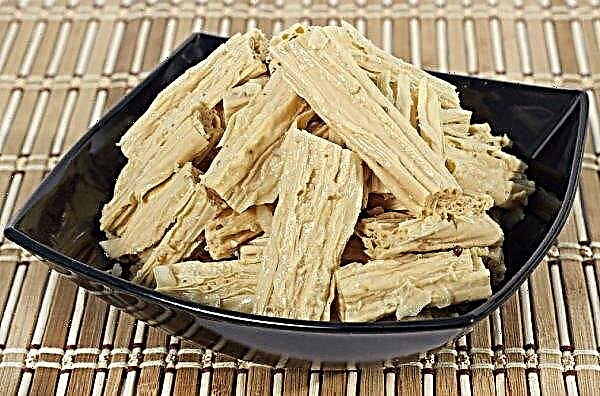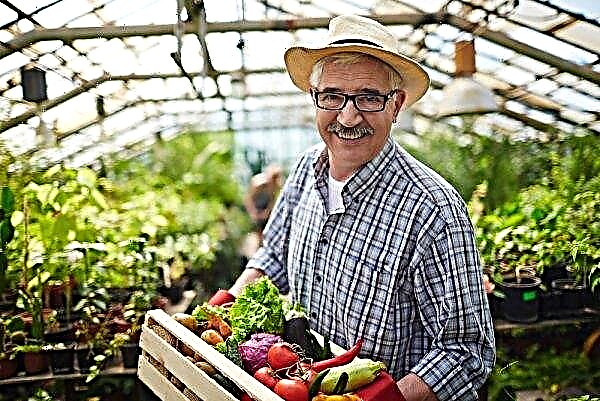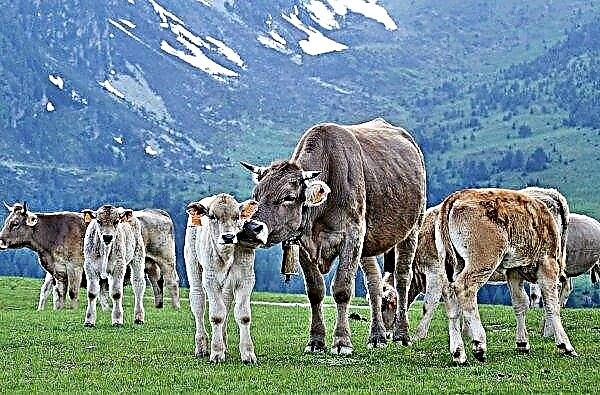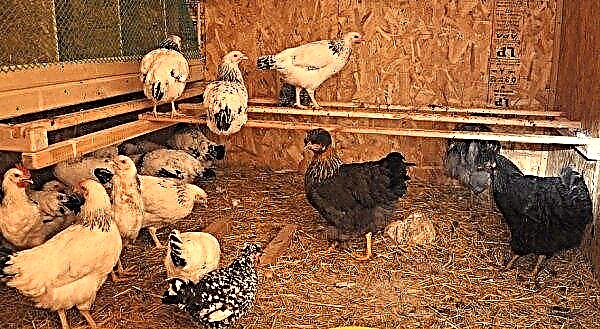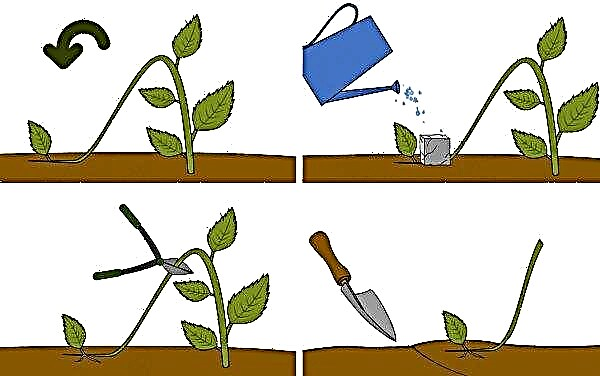Ginger root is a traditional oriental spice, gaining more and more popularity around the world. It is not surprising that summer residents have a question about the possibility of growing such a plant in their own area. There is not much impossible in the world, and this review will discuss how to cultivate ginger in the middle zone of the European part of Russia or other regions with similar climatic conditions.
Is it possible to grow ginger in the middle lane
In the wild, it is quite difficult to meet ginger today, however, most likely, the historical homeland of this plant is South Asia. Ideal conditions for growing this spice are present in East Asia, as well as in the south of the Black Continent.
Did you know? Ginger conquered Europe starting in Spain, where Muslims brought it in the 9th-11th centuries. Moreover, as befits the inhabitants of the East, who wish «to stuff» the price of their goods, cunning merchants did not reveal the secret of the origin of aromatic spice, telling Europeans incredible tales that the miraculous root grows at the end of the world and is vigilantly guarded by bloodthirsty troglodytes.
On an industrial scale, Chinese, Japanese, Indians, Indonesians, Thais and Australians cultivate the culture. In addition, significant plantations are located in some states of West Africa, in Brazil, in Barbados and Jamaica.
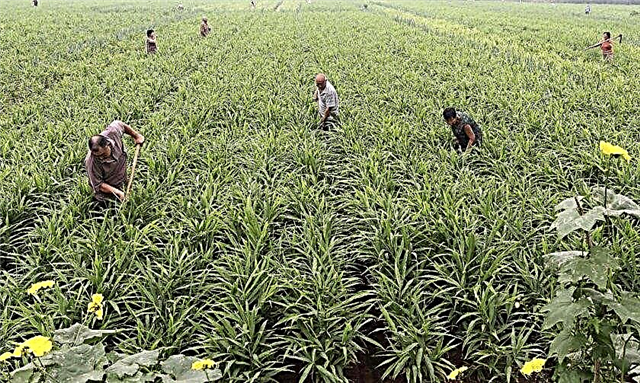
In order for a plant to have time to form a rhizome of the required size, it is necessary, on average, to be in the earth for at least 8–10 months, which is rather difficult to provide in the conditions of Central Russia, given that this is a very thermophilic culture that needs a high humidity, protection from direct sunlight, winds and drafts.
For this reason, in the open ground, spice can be grown only in the southern regions of the Russian Federation, for residents of colder regions, the cultivation of ginger is possible only if the greenhouse is used for this purpose. As a rule, in our country, culture is grown for one season, that is, as an annual.
Suitable varieties
Genus ginger (Latin name - Zingiber) combines nearly one and a half hundred species, but as a spice a plant is grown Zingiber officinal, also known as pharmaceutical, medicinal, real or ordinary ginger. In eastern countries, many of its varieties are bred (only in India there are 26) but the following representatives of the species are considered the most famous:
- Kerala
- Indian;
- West African
- Jamaican.
 It should be noted that white (Bengali) and black (Barbados) ginger are not different varieties, but the features of the root harvest of the same plant.
It should be noted that white (Bengali) and black (Barbados) ginger are not different varieties, but the features of the root harvest of the same plant.
In the first case, the rhizome is cleaned and bleached in sulfuric acid (2%) before drying. The black root is not subjected to such processing, but it has a more saturated smell and pronounced burning.
Did you know? Kerala is a state in southwestern India, washed by the waters of the Arabian Sea. Its territory is famous not only for its magnificent beaches, but also for the largest ginger plantations in the country (about 70% of the spice of the total volume is produced here).
Growing ginger in the open ground: step by step instructions
A resident of the Middle Strip in open ground will not be able to grow powerful exotic-looking rhizomes that adorn the shelves of an oriental bazaar or a modern European supermarket, but it is quite possible to get a crop of small roots with a completely authentic taste and smell.

True, for this it is necessary to spend a lot of effort, since a temperate continental climate is still not quite what is needed for the normal development of valuable oriental spice. For residents of the middle zone of the European part of the Russian Federation, the optimal time to start growing seedlings is the end of February.
Important! Since the formation of rhizomes requires much more time than the warm season lasts in the Middle Strip, spice can be grown exclusively through seedlings, thus extending the natural period of the growing season for at least 2 months.
Soil preparation
Ginger loves a light fertile soil with a pH reaction close to neutral or slightly acidic. To create favorable conditions for the plant, the planting bed should be prepared in the fall. First you need to dig the earth to the depth of the shovel bayonet (25-30 cm), while carefully removing the weeds along with the roots, debris and the remains of previously cultivated crops.

After digging, the clods of earth should be disassembled by hand, so that the soil becomes soft and loose. Then, using a number of additives, they improve the soil structure (increase its lightness), as well as enrich its organic and mineral composition.
For this purpose, on the bed, based on each square meter of area, you should make:
- sand - 10 l (if the soil is clay, the amount of sand needs to be increased);
- humus - 10–20 l;
- vermicompost - 500-600 g;
- nitrophosco (complex nitrogen-potassium-phosphorus fertilizer) - 50–80 g.
You can increase the acidity of the soil with a coniferous substrate or peat.

Already on top of such a drainage layer, you can lay the prepared fertile soil mixture.
For growing seedlings, the soil is prepared differently. Garden soil, vermicompost, sand and humus are mixed in equal proportions, after which they are necessarily disinfected.
For this purpose, the substrate can be kept for several hours in an oven warmed up to + 70 ° C, left overnight in the cold (you need a temperature of no higher than -15 ° C) or sprinkled with plenty of saturated potassium permanganate solution.

The finished substrate should be poured into boxes or pots with a wall height of at least 25 cm, on the bottom of which a layer of expanded clay or other drainage material is preliminarily laid, then abundantly pour with settled water at room temperature and immediately proceed with planting.
Rhizome preparation
Ginger seedlings are not grown from seeds, but from rhizomes, that is, by a vegetative method. Planting material can be purchased at any supermarket or market, of course, it is important that the root is fresh.
Important! For planting, you should choose only young roots. They are easily distinguished by their light, slightly golden color and the presence of eyes (the same as those found on potato tubers).
When choosing a product, you should pay attention to the absence of any damage on the root (they are the "gate" for many infections), as well as to the condition of the skin - it is desirable that it be as smooth as possible, without wrinkled areas and signs of lethargy or drying out.
The acquired rhizome must be soaked in warm water for 12-24 hours. In the water, you can add any rooting stimulant ("Kornevin", "Epin", "heteroauxin", etc.), diluting the drug in accordance with the manufacturer's instructions.
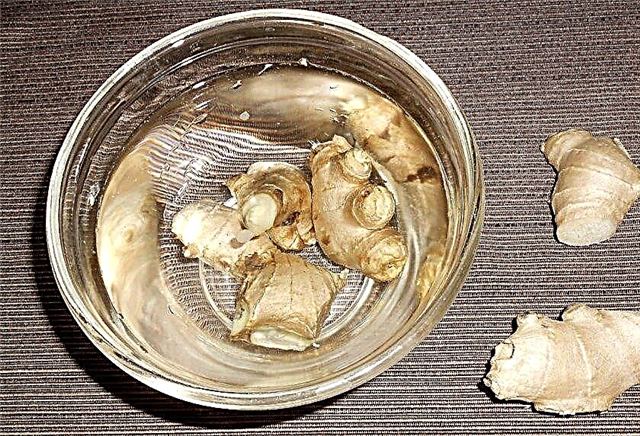
In the process of soaking on the rhizome, growth points - buds - are indicated. After that, the root can be easily divided with a sharp knife into parts for planting so that at least two living kidneys are present on each fragment.
As the cut lines, it is better to choose the end of the processes (jumpers). In order to prevent fungal infections from entering the tissue, it is important to disinfect the cut sites, for example, sprinkle with powdered activated or charcoal, treat with any biofungicide (Fitosporin, Trichodermin, Haupsin, etc.).
Fragments of the root prepared in this way should be placed in already prepared boxes with a nutrient substrate, making sure that the kidneys "look" up. To plant planting material in the soil you need about 3-4 cm.

After planting, you can pour water on the ground again with slightly warmed water to stimulate the germination process, and then install it in a warm and well-lit place. Before the first shoots appear, the surface of the soil in the pots needs to be moistened periodically using a spray bottle so as not to damage the young shoots.
Transplanting
If the root has been selected, prepared and planted correctly, the first shoots above the surface of the earth should appear in 2-3 weeks. In seedling care, the main thing is to ensure high air humidity without over-moistening the soil.
Planting seedlings in open ground is carried out no earlier than the beginning of May (in the southern regions of the Russian Federation, under favorable weather conditions, this can be done in the last decade of April, but it is not necessary to hurry too much so that spring return frosts do not destroy the heat-loving plant).Did you know? The name of the plant comes from the ancient Indian "sringavera", which is translated from Sanskrit literally means "horned". Thus, the Indians emphasized the unusual root shape of this popular spice.
Ginger is usually planted in rows. The distance between individual seedlings should be at least 30 cm, the minimum row spacing - 20 cm. Seedlings are placed in open ground by transshipment in prepared wells, abundantly watered with water. After immersing the plants in them, together with an earthen lump, you need to firmly press the seedlings on all sides with earth, water again, and when the water is absorbed, sprinkle a fresh layer of the nutrient substrate on top.
 Immediately after planting, young plants need to be covered with film, glass, polycarbonate or other light-transmitting material that can reliably protect young ginger from nightly low temperatures, gusty winds and other natural disasters. Film can only be removed after stable heat has been established.
Immediately after planting, young plants need to be covered with film, glass, polycarbonate or other light-transmitting material that can reliably protect young ginger from nightly low temperatures, gusty winds and other natural disasters. Film can only be removed after stable heat has been established.
Dressing and care
In favorable conditions, ginger is gaining green mass very quickly, but for this the plant needs abundant, but not excessive watering and, which is especially difficult to provide, increased air humidity. Therefore, when watering seedlings, you need to pay special attention to sprinkling, trying to ensure that the leaves of the plant receive no less water than its roots.
Important! You can not water the seedlings on the leaves in bright sunlight, otherwise serious burns are inevitable. To moisten the beds, it is better to choose evening time or early morning.
The frequency of watering depends on weather conditions, however, even in a not-so-dry period, you need to moisten the garden no less often than every other day. In order to avoid the formation of a dense crust of the earth, which prevents the penetration of oxygen to the roots, the soil surface should be carefully loosened, at the same time removing weed growing on the bed.

Simultaneously with watering, about 2-3 times a month, seedlings of ginger need to be fed with organic and mineral fertilizers. For these purposes, rotted manure (cow or horse) is well suited, which can be alternated with bird droppings. Fertilizers are diluted with water to obtain a solution (10-15%), which is applied to each plant - always after heavy watering, so as not to burn the roots.
By the end of summer, in addition to manure that enriches the soil with nitrogen, it is useful to feed ginger with potassium. This element affects the development of rhizomes. As potash fertilizer, you can use wood ash (1/4 cup for each bush) or potassium sulfate (based on 50-60 g per square meter of beds).
Harvesting and storage rules
Like all plants in which the root is used, ginger is very important to stop watering before harvesting. Since the eastern exot does not tolerate drying out of the soil, such a forced break should be no more than 7-10 days.
Important! The main signal to stop watering is the beginning of natural yellowing and drying out of the leaves, with which ginger responds to a reduction in daylight hours and a gradual decrease in average daily air temperature.
You need to dig out the rhizomes in dry weather, trying to act with a shovel very carefully so as not to damage the peel. The remains of the earth and root processes from the harvested from the earth must be carefully removed with your hands (you can not beat the roots on the ground or clean them with sharp objects), then leave the rhizomes to dry directly under the sun or, if the weather is cloudy with a high probability of rain, in a dry room in good ventilation.
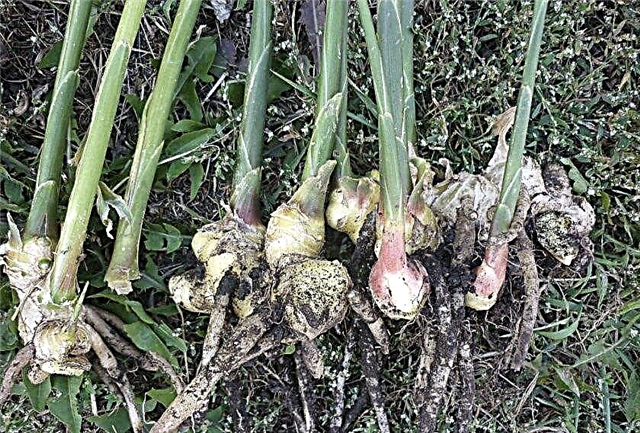
The question of the ability to wash away dirt from the roots is debatable, but most experienced gardeners recommend that you do not wet the crop before laying it for long-term storage.
Check out

Own "home" ginger is an achievement that not every housewife can boast of. The middle part of the European part of Russia, unfortunately, is initially poorly suited for growing this crop, however, attempts to deceive nature can still be successful if you approach the issue with all seriousness and try to create the most favorable conditions for the plant.
If you want to get a root that is comparable in size and appearance to imported products, of course, you need a greenhouse, but those who are willing to compromise get a certain harvest of fragrant exotic culture from the open ground.

